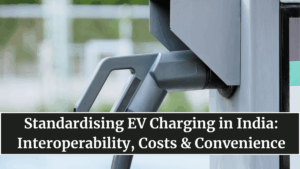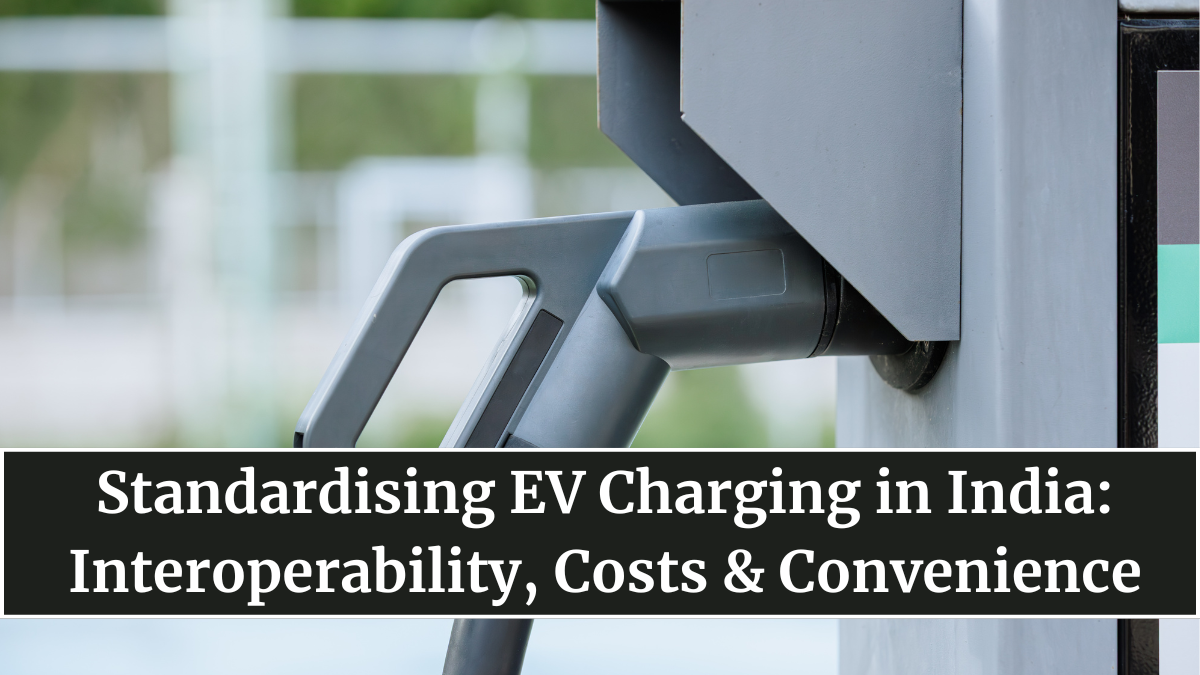India’s electric vehicle revolution is racing ahead — but one challenge threatens to slow it down: charging standardisation. With multiple connector types, incompatible charging ports, and varied software ecosystems, EV owners across the country often face confusion and inconvenience.
The drive toward interoperable EV charging standards in India aims to simplify this landscape, ensuring every EV can plug into any charging station, regardless of brand or region. As the country accelerates toward its 2030 EV goals, achieving charging harmony is no longer optional — it’s essential.

Why Interoperability Matters for India’s EV Future
The EV charging network in India has grown rapidly, yet remains fragmented. Different manufacturers use different connectors — from CHAdeMO and CCS2 to Type 2 AC — leaving drivers unsure where they can charge their vehicle.
Here’s why interoperability is crucial:
-
Seamless access: One universal standard means any EV can charge anywhere.
-
Cost efficiency: Standardization lowers hardware costs and improves scalability.
-
User convenience: Simplified access reduces range anxiety and boosts EV adoption.
-
Investment confidence: Infrastructure providers gain assurance of long-term compatibility.
-
Policy alignment: Enables smoother nationwide rollouts and subsidies under FAME-II and state policies.
A unified charging framework would ensure that India’s EV ecosystem grows sustainably — benefiting users, automakers, and energy providers alike.
Current Charging Standards in India
India currently uses multiple charging protocols depending on vehicle category and origin:
| Charging Type | Connector Standard | Commonly Used For | Typical Power Output |
|---|---|---|---|
| AC Type 2 | Bharat AC001 / IEC 62196 | Cars, scooters | 3.3 kW – 22 kW |
| DC CCS2 | Combined Charging System | Premium EVs | Up to 350 kW |
| CHAdeMO | Japanese EVs (legacy) | Early imports | 50–100 kW |
| GB/T | Chinese EVs & buses | Fleet vehicles | 200–250 kW |
| Bharat DC-001 | India’s local standard | Two & three-wheelers | 15–20 kW |
The absence of a single national protocol leads to technical mismatches between chargers and vehicles — especially across states and cities.
Government and Industry Push Toward Standardisation
Recognizing the urgency, the Government of India, through the Bureau of Indian Standards (BIS) and Ministry of Heavy Industries, is leading efforts to unify EV charging under a single framework.
Key initiatives include:
-
Draft policy for unified charging standards covering AC and DC formats.
-
Bharat EV Charger 2025 roadmap, proposing nationwide compatibility for all EV categories.
-
Public-Private collaborations between BEE, NITI Aayog, and automakers to pilot interoperable networks.
-
Integration of RFID and app-based access, enabling cross-network charging via a single digital ID.
The goal: make charging as easy as using an ATM — one plug, one payment system, anywhere in India.
How Standardisation Benefits Consumers and Manufacturers
For consumers:
-
Plug-and-charge convenience across the country.
-
Transparent pricing and uniform access to fast chargers.
-
Elimination of brand lock-ins between EV and charger types.
For manufacturers and operators:
-
Reduced R&D duplication and hardware costs.
-
Faster rollout of charging networks.
-
Greater economies of scale and export potential for Indian-made chargers.
Unified standards will also allow smarter energy management, helping utilities balance loads and integrate renewable sources more efficiently.
Challenges Slowing Standardisation
Despite progress, a few challenges persist:
-
Diverse vehicle ecosystem: India’s mix of two-wheelers, cars, and buses complicates universal hardware design.
-
Legacy systems: Early EVs still rely on outdated connectors like CHAdeMO.
-
Private network fragmentation: Companies running closed charging systems resist open-access integration.
-
Technology lag: Some local manufacturers lack advanced CCS2 or high-power DC capabilities.
-
Policy alignment: Different states have varying EV infrastructure rules.
Addressing these hurdles requires industry cooperation, strict compliance enforcement, and a national interoperability mandate.
The Future of EV Charging in India
By 2030, India’s EV charging landscape is expected to be fully interoperable, intelligent, and user-centric. Technologies like vehicle-to-grid (V2G), AI load balancing, and solar-powered microgrids will redefine how and where vehicles charge.
Emerging trends shaping the next decade include:
-
Ultra-fast chargers (400–600 kW) reducing charge times to under 10 minutes.
-
Dynamic pricing models based on real-time grid demand.
-
Unified national charging app for seamless payments and navigation.
-
Smart swapping stations for electric two and three-wheelers.
India’s EV future lies not just in building more chargers — but in ensuring every one of them connects effortlessly.
The day a driver can travel from Delhi to Chennai, charging anywhere without a second thought, will mark the true arrival of India’s electric mobility revolution.
FAQs
Why does India need EV charging standardisation?
To ensure all electric vehicles — from scooters to SUVs — can charge anywhere, reducing compatibility issues and user inconvenience.
What are India’s main EV charging standards today?
India uses Bharat DC-001, CCS2, Type 2 AC, and GB/T, but aims to unify these under a single national protocol by 2025.
How will this affect EV owners?
It will simplify charging, reduce costs, and improve access to fast chargers across all states and networks.
Which agencies are driving this initiative?
The BIS, BEE, and Ministry of Heavy Industries are leading the move toward a unified EV charging standard.
What’s next for EV charging in India?
By 2030, expect nationwide interoperability, ultra-fast chargers, and smart-grid integration for seamless electric mobility.
Click here to know more.
